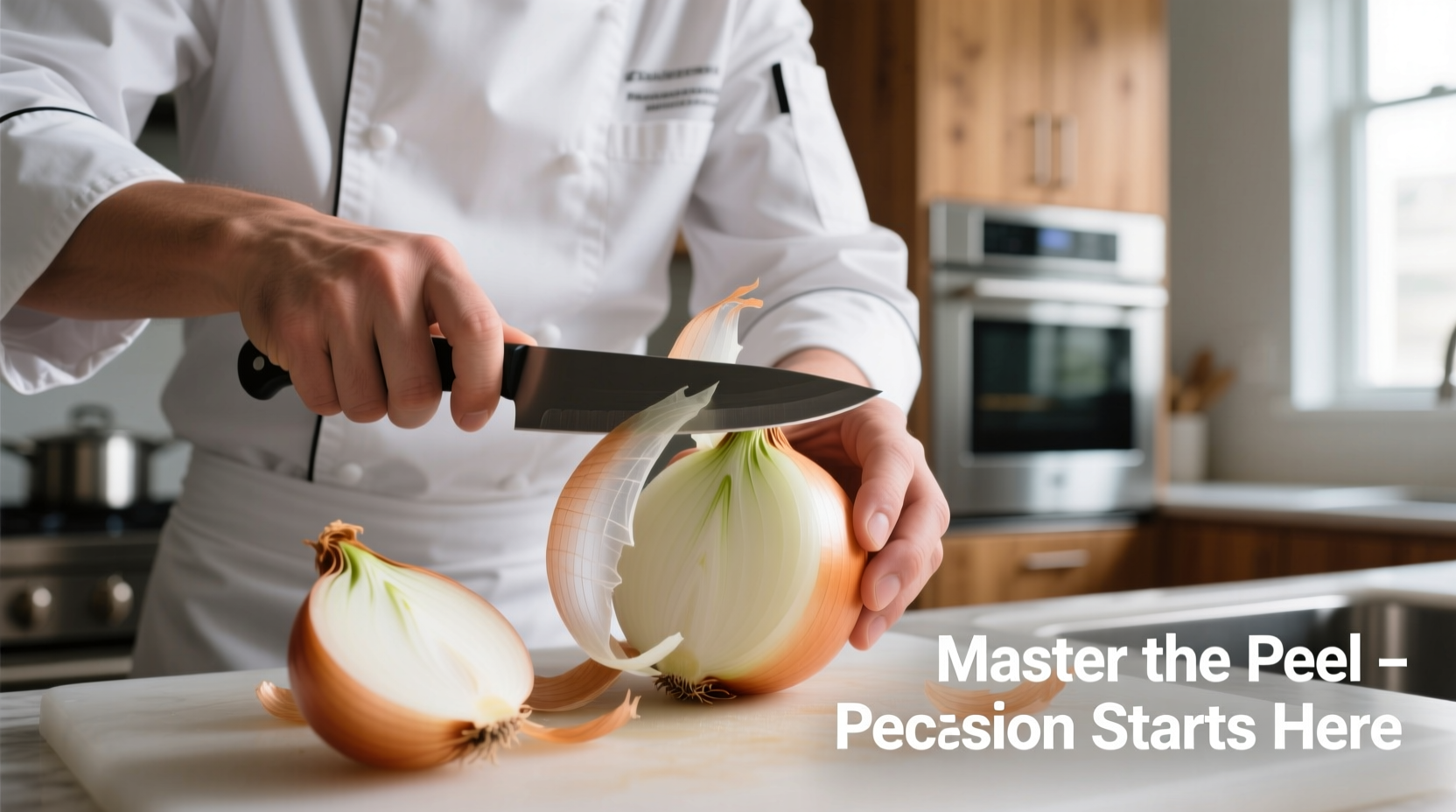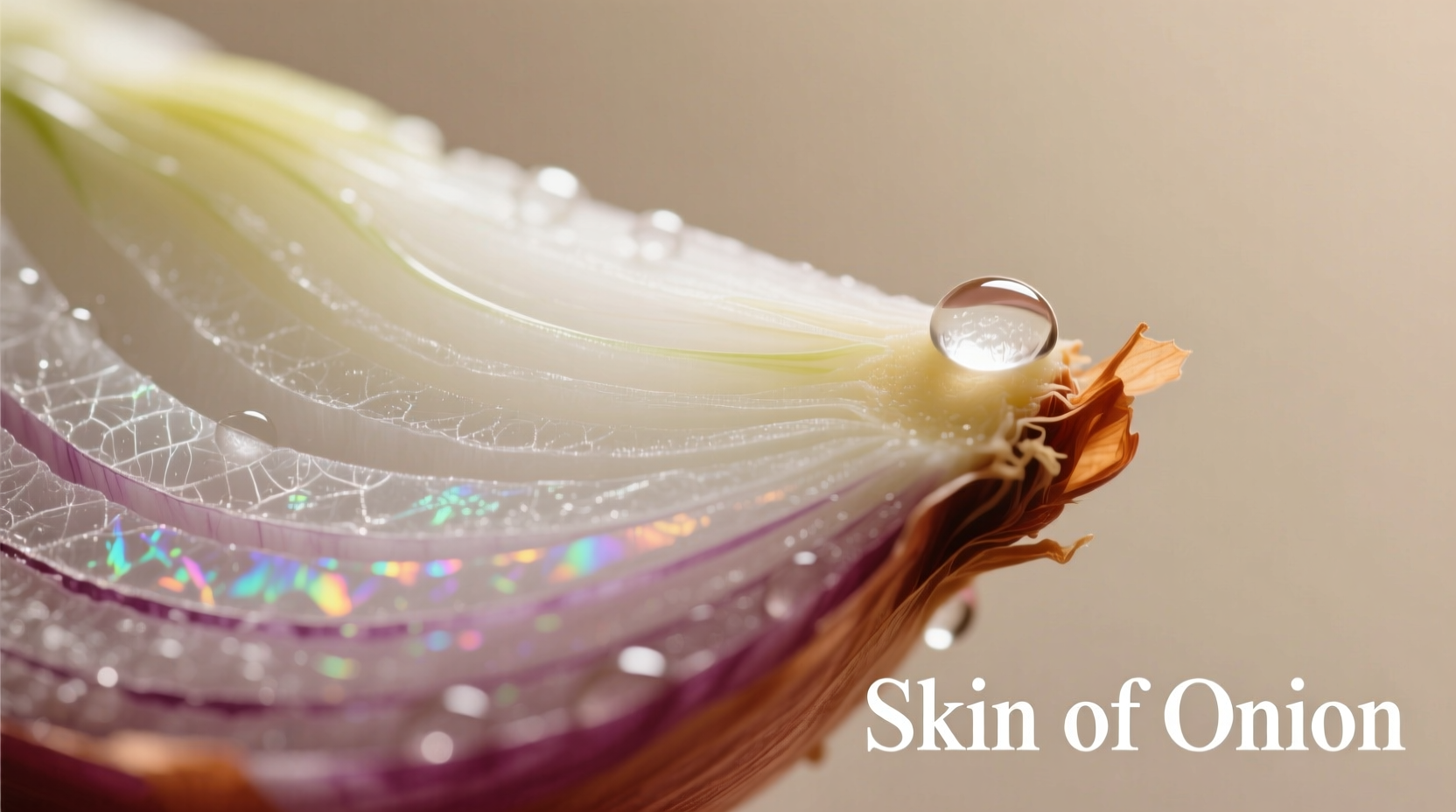The skin of an onion is a thin, papery outer layer composed primarily of cellulose and flavonoids that protects the edible layers beneath. While not typically consumed due to its tough texture, onion skins contain concentrated antioxidants like quercetin and have legitimate uses in cooking stocks, natural dyeing, and composting. Professional chefs recommend removing the skin before eating but saving it for flavor extraction or eco-friendly applications.
Ever wondered why that thin, papery layer surrounding your onion exists? That seemingly insignificant skin serves as nature's perfect protective wrapper, shielding the juicy layers inside from damage and moisture loss. Understanding onion skin properties transforms how you handle this kitchen staple, potentially reducing food waste while enhancing your culinary creations.
What Exactly Is Onion Skin Made Of?
Onion skins consist primarily of cellulose fibers arranged in multiple thin layers, creating that characteristic papery texture. Unlike the fleshy interior, these outer layers contain higher concentrations of protective compounds that help the bulb survive underground. According to USDA agricultural research, onion skins contain up to 20 times more quercetin—a potent antioxidant—than the edible portions beneath.
| Component | Concentration in Skin | Concentration in Flesh |
|---|---|---|
| Quercetin | High (up to 1,200 mg/kg) | Low (50-60 mg/kg) |
| Cellulose | Very High | Moderate |
| Moisture Content | 5-8% | 85-90% |
| Sulfur Compounds | Moderate | High |
This composition explains why onion skins feel dry and papery compared to the moist interior. The National Onion Association confirms that these protective layers develop as the onion matures, with multiple thin skins forming between the bulb and outer dry layers.
Practical Handling: When to Remove and When to Keep
Professional chefs approach onion skins differently depending on the culinary application. For most recipes where the onion becomes the primary ingredient—like salsas, salads, or caramelized onions—complete skin removal is essential for proper texture and mouthfeel.
"I teach my culinary students that proper skin removal starts with cutting off both ends," explains Antonio Rodriguez, chef and cooking instructor. "This creates access points that let you peel away the skin in one continuous motion rather than struggling with small pieces. The key is working with the onion's natural layers, not against them." 
However, when making stocks, broths, or slow-cooked dishes, many professional kitchens actually keep the skins. The University of California Cooperative Extension notes that onion skins contribute rich color and subtle flavor complexity to stocks without adding bitterness when simmered properly.
Debunking Common Onion Skin Myths
Several persistent myths surround onion skins. Let's separate fact from fiction:
- Myth: Onion skins contain dangerous toxins
Fact: While not typically eaten due to texture, onion skins are non-toxic and contain beneficial compounds. The FDA confirms no safety concerns with incidental consumption. - Myth: All onion skins are equally thick and tough
Fact: Skin thickness varies by variety—Spanish onions have thinner skins than red onions, while pearl onions have almost translucent coverings. - Myth: Onion skins cause excessive tearing
Fact: The lachrymatory factor comes from the fleshy layers, not the dry skin. Proper ventilation matters more than skin handling for tear prevention.
Creative Secondary Uses for Onion Skins
Before discarding those papery layers, consider these practical applications that reduce kitchen waste:
Natural Food Coloring and Dyeing
Yellow onion skins produce a beautiful golden hue, while red onion skins create soft pinks and corals. The Textile Society of America documents historical use of onion skins for natural dyeing, noting that a simple simmer with vinegar as a mordant yields colorfast results on natural fibers.
Nutrient-Rich Stock Enhancement
Save your skins in a freezer bag until you have enough for stock-making. The University of Massachusetts Amherst Extension recommends simmering onion skins for 45-60 minutes to extract maximum flavor and color without bitterness. Strain thoroughly before using.
Composting Powerhouse
While slower to decompose than the fleshy parts, onion skins contribute valuable carbon to compost piles. Cornell University's Waste Management Institute confirms they break down completely within 2-3 months in properly maintained compost systems.
When to Exercise Caution with Onion Skins
Though generally safe, certain situations warrant extra care:
- Mold presence: Discard onions with fuzzy mold on skins, as toxins may have penetrated inward (per FDA food safety guidelines)
- Sprouting onions: While edible, sprouted onions have compromised skins that may harbor bacteria in the hollow sprout channels
- Chemical residues: Conventionally grown onions may retain pesticide residues on skins—always wash before handling if keeping skins for stock
For those with sensitive digestive systems, consuming large quantities of raw onion skin could cause discomfort due to the high cellulose content. The Academy of Nutrition and Dietetics recommends removing skins completely for individuals with digestive disorders.
Maximizing Your Onion Experience
Understanding onion skin properties transforms your kitchen efficiency. By recognizing when to remove skins completely versus when to leverage their properties, you'll reduce waste while enhancing your culinary results. Keep a dedicated freezer container for stock ingredients—onion skins, carrot tops, and celery ends combine to create restaurant-quality bases for soups and sauces.
Remember that proper storage affects skin integrity. The USDA recommends keeping onions in a cool, dry, dark place with good air circulation. Avoid plastic bags which trap moisture and accelerate spoilage. When stored correctly, onion skins maintain their protective function for 2-3 months for most varieties.











 浙公网安备
33010002000092号
浙公网安备
33010002000092号 浙B2-20120091-4
浙B2-20120091-4